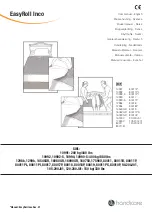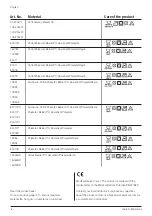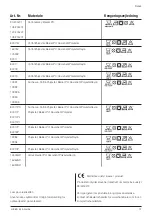
7
U S E R M A N U A L
If positioning is strenuous, the EasyRoll4Way, Inco with handles (Art. No. 10990, 10992,
10990-5, 10992-5) can be used in combination with a user lift. Only connect the handles
on one side of the sheet to the slingbar loops. See image. Positioning in combination with
a lift reduces friction under half of the body and facilitates repositioning of the user in bed,
e.g., lying on the side or higher up in bed.
Advice: Use AdjustmentLoops (Art. No. 49182006) to increase the distance between the
slingbar and the sliding drawsheet.
Advice
English
Turn the user by grasping the sliding drawsheet at the level of the hip
and shoulder.
Turning using the sliding drawsheet can be done by 1 or 2 caregiv-
ers. When two caregivers are assisting, one can draw the sliding
drawsheet (as above) and the other can press the sliding drawsheet
down against the bed at the hip and shoulder while at the same
time pushing (image 2), using the so-called “press down method”.
Then, the user is turn on one side (images 3 and 4) and repositioned
comfortably in the right position.
Decide, in each individual case, whether the user can be left without
the bed side rails raised. Remember, there is a risk that the user may
slide out of bed.
Turning
Higher up in bed with
When repositioning the user higher
up in bed the sliding drawsheet is
grasped at the centres of gravity
on either side of the user, either by
grasping the fabric or the handles,
depending on the model. Work in
an upright stance and shift your
weight while drawing the user
higher up in bed.
Sitting up in bed
The user can be prevented
from sliding downward in
bed by tucking in the lower
10 cm. By folding the sliding
drawsheet double the friction
side faces downward, against
the underlying surface,
thereby preventing the user
from sliding downward in bed.








































